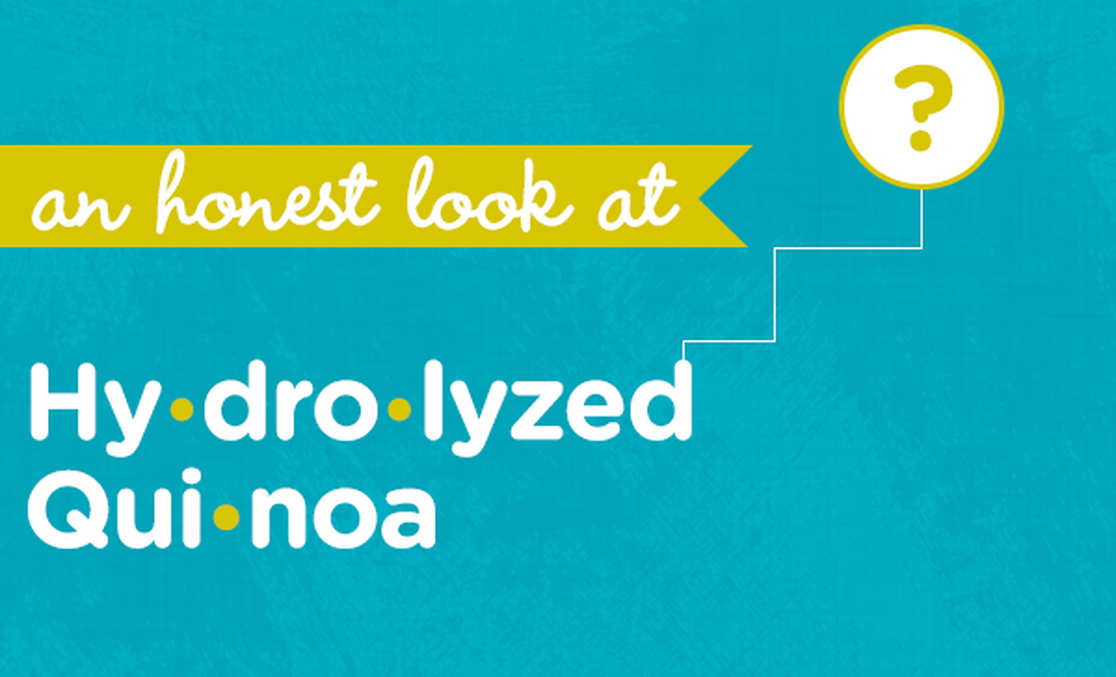This is part of our ongoing series helping consumers better understand chemicals, chemistry, and product formulations. We translate the science, bust the myths, and give you an honest assessment, so you can make informed choices for your family!
Ingredient:
Hydrolyzed quinoa (keen-WAH)
What it is:
Hydrolyzed quinoa is an extract of quinoa, a plant related to beets, chard, and spinach. The term “hydrolyze” simply means that the quinoa is broken down with water. Quinoa was initially cultivated in the Andes thousands of years ago and was called “chisaya mama,” or the mother of all grains by the Incas (1,2). With growing popularity, farmers around the globe are starting to plant this botanical wonder.
What it does:
Often dubbed a “superfood,” these days quinoa is delivering more than just nutritional benefits. These protein rich seeds have amazing body benefits, especially for your hair. In fact, since ancient times, the Andeans have used the saponin-filled leftover wash water from quinoa as a shampoo (3). What does it do exactly? Preliminary studies show it may help repair and revitalize hair, help prevent tangles, and increase shine, volume, and smoothness (4).
Why Honest uses it:
As you can probably guess, we use hydrolyzed quinoa in our products because of its benefits to your luscious locks! Plus, it has a long history of safety. And, as far as botanical resources go, quinoa is a hardy crop that grows well in poor soil and is resistant to drought and frost (5). Lastly, the seedheads are incredibly prolific: Just a half pound of seed can plant a full acre and yield 1200-2000 pounds of new seeds (6). It’s a pretty amazing natural resource!
References:
- 2013 International Year of Quinoa (IYQ2013). Retrieved November 26, 2015, from http://www.fao.org/quinoa-2013/what-is-quinoa/origin-and-history/en/
- Popenoe, H. (1989). Lost crops of the incas: Little-known plants of the andes with promise for worldwide cultivation. National Academy Press.
- Kitz, L. (2008). Evaluation of Downy Mildew (Peronospora farinosa f. sp. chenopodii) Resistance among Quinoa Genotypes and Investigation of P. farinosa Growth using Scanning Electron Microscopy.
- Kasprzyk, E. (2011). The Next Generation of Natural Proteins for Skin and Hair. Retrieved November 26, 2015, from https://www.in-cosmetics.com/RXUK/RXUK_InCosmetics/documents/TRI-K%20-%20In-Cosmetics%202011.pdf
- Brinegar, C. (1997). The seed storage proteins of quinoa. In Food proteins and lipids (pp. 109-115). Springer US.
- Quinoa – March Grain of the Month. Retrieved November 26, 2015, from http://wholegrainscouncil.org/whole-grains-101/quinoa-march-grain-of-the-month
This post was revised as of 1/14/2016.
We aim to provide you with the most honest and credible information possible. This article was reviewed for accuracy by The Honest Team and was written based on sources that are linked at the bottom of the article.
blog_review_statement



